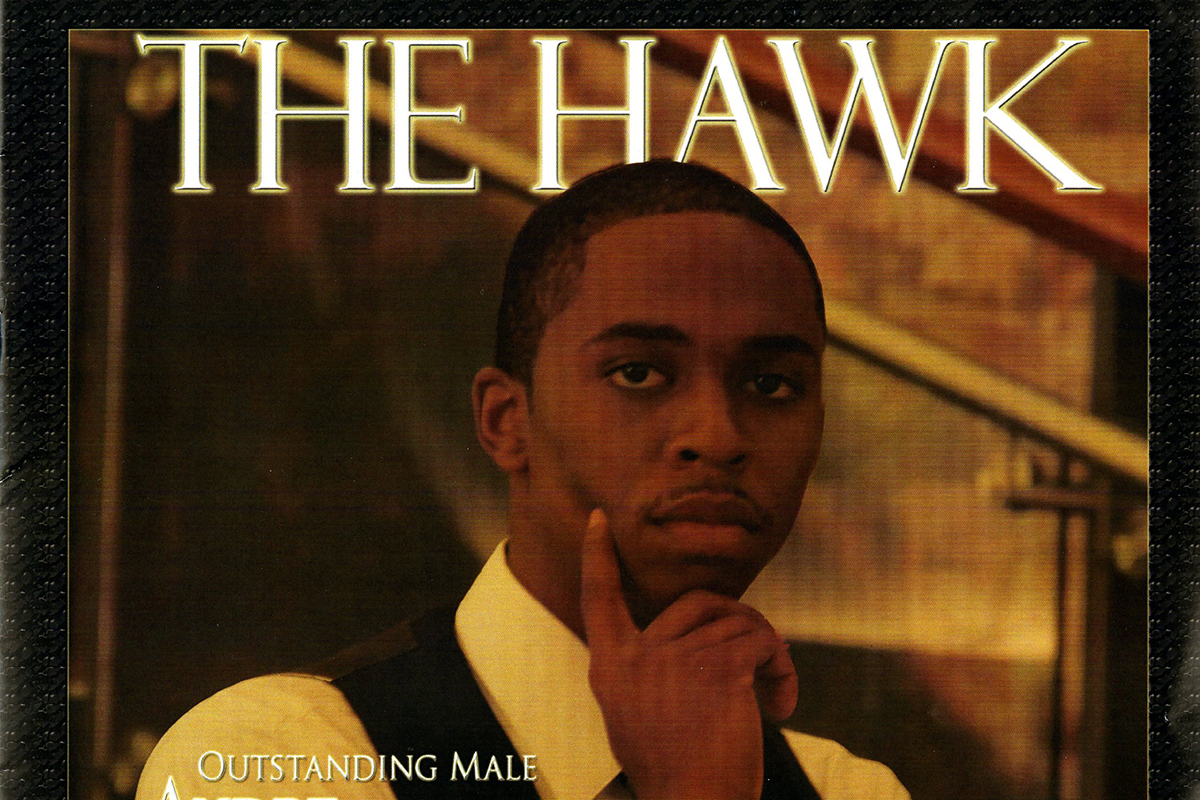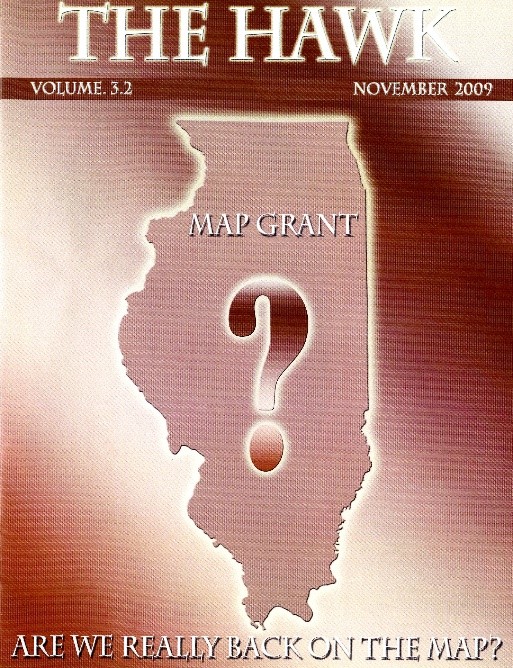 Final issue of The Hawk, June 2010. (Image courtesy of Special Collections and Archives)
Final issue of The Hawk, June 2010. (Image courtesy of Special Collections and Archives)
As we honor and celebrate Black History Month, Special Collections and Archives is spotlighting DePaul's Black student newspaper, “The Hawk." The story behind the creation of the newspaper serves as a significant example of Black student leadership at DePaul. The stories featured in “The Hawk" are important in their documentation of the experiences and accomplishments of Black students, staff, faculty and alumni.
The first issue of “The Hawk" was published on Feb. 1, 2006. Black students on campus wanted and needed an outlet for news stories highlighting issues important to the Black community at DePaul, which were often neglected or misrepresented by other campus publications. Voltaire Davis, president of the Black Student Union at the time, recognized that need and spearheaded the development of “The Hawk" as a monthly newspaper published by the BSU. The first issue's cover story ran with the headline “It's Time" and declared, “The time has arrived to let our voices be heard!" Similarly, its mission statement reads, “The Purpose of the Hawk is to give minority students at DePaul a forum to voice their opinions as well as honor African American success. We also strive to educate our readers about past events that have led to present circumstances…"
The name for “The Hawk" was a tribute to the late singer, actor and Chicago native Lou Rawls. The entertainer was known for his efforts to support Black students in higher education with his annual telethon, "Lou Rawls Parade of Stars," which featured comedy and musical performances and raised money for the United Negro College Fund. Rawls also was known for his Grammy-winning performance of the song “Dead End Street." The song describes Chicago in the wintertime and uses the hawk as a metaphor for the wind: “I'm speakin' of the almighty hawk, Mr. Wind—when he blows down the street around 35, 40 miles an hour, it's just like a giant razorblade blowin' down the street…"
Creators envisioned “The Hawk" to represent the legacy of Black students at DePaul with the same spirit of Lou Rawls' hawk, as “a razorblade of knowledge and truth blowing through the university." The newspaper maintained this vision throughout its 2006-10 publication run. In addition to engaging and controversial columns, each issue offered a letter from the editor, ads spotlighting Black organizations and events, a social calendar and occasional book lists focused on race and culture. Each column maintained a distinct focus on Black perspectives. These columns often built upon each other and were oriented around a central theme or discussion of underrepresented topics, ranging from afro-latinx representation in the media and anti-blackness on campus to celebrations of historically Black fraternities and sororities at DePaul.
Of the approximately 60 students dedicated to “The Hawk's" success, more than 30% also worked with student organizations including the BSU, Student Government Association and “The DePaulia." This allowed student writers and editors to bring unique interests and expertise to the various aspects of campus life “The Hawk" underscored. In particular, the mutual involvement of several staff writers allowed “The Hawk" to build off of “The DePaulia's" coverage and extend it to populations not always reached.
 "The Hawk’s" Map Grant Rally coverage, November 2009. (Image courtesy of Special Collections and Archives)
"The Hawk’s" Map Grant Rally coverage, November 2009. (Image courtesy of Special Collections and Archives)One example can be seen in the coverage of a 2009 MAP Grant Rally. Despite “The DePaulia's" wide coverage of this issue (7 articles across 4 issues), the majority of the focus was placed on students as a whole and student financial hardship in general. “The Hawk's" single article described the MAP grant as an issue for students in need, but emphasized its long-term impact on the Black community. It compared the cost of welfare, incarceration and education to further demonstrate how intersectional issues like these affect Black families in Chicago, compelling future advocacy and activist efforts.
The article closed with the following note, “The Black Student Union of DePaul would like to thank the student body government president, Dillon Goodson, and vice president, Elena Suarez, for all their efforts in making sure that the Black Student Union was included in this effort." This speaks to the sense of partnership and engagement “The Hawk" consistently attempted to foster amongst the larger DePaul community.
With many of the students running the publication set to graduate in spring 2010, the final issue of “The Hawk" published that June as a special collector's edition. It offered an extended cover story written by BSU president and staff writer Ruthie Moore, which celebrated the accomplishments of long-time “Editor N Chief," Christa Smith, and staff writer, Andre “Dre" Bobb. Through the candor and collaborative efforts of Black students at DePaul, “The Hawk" provided a space for Black voices to be celebrated, uplifted and remembered.